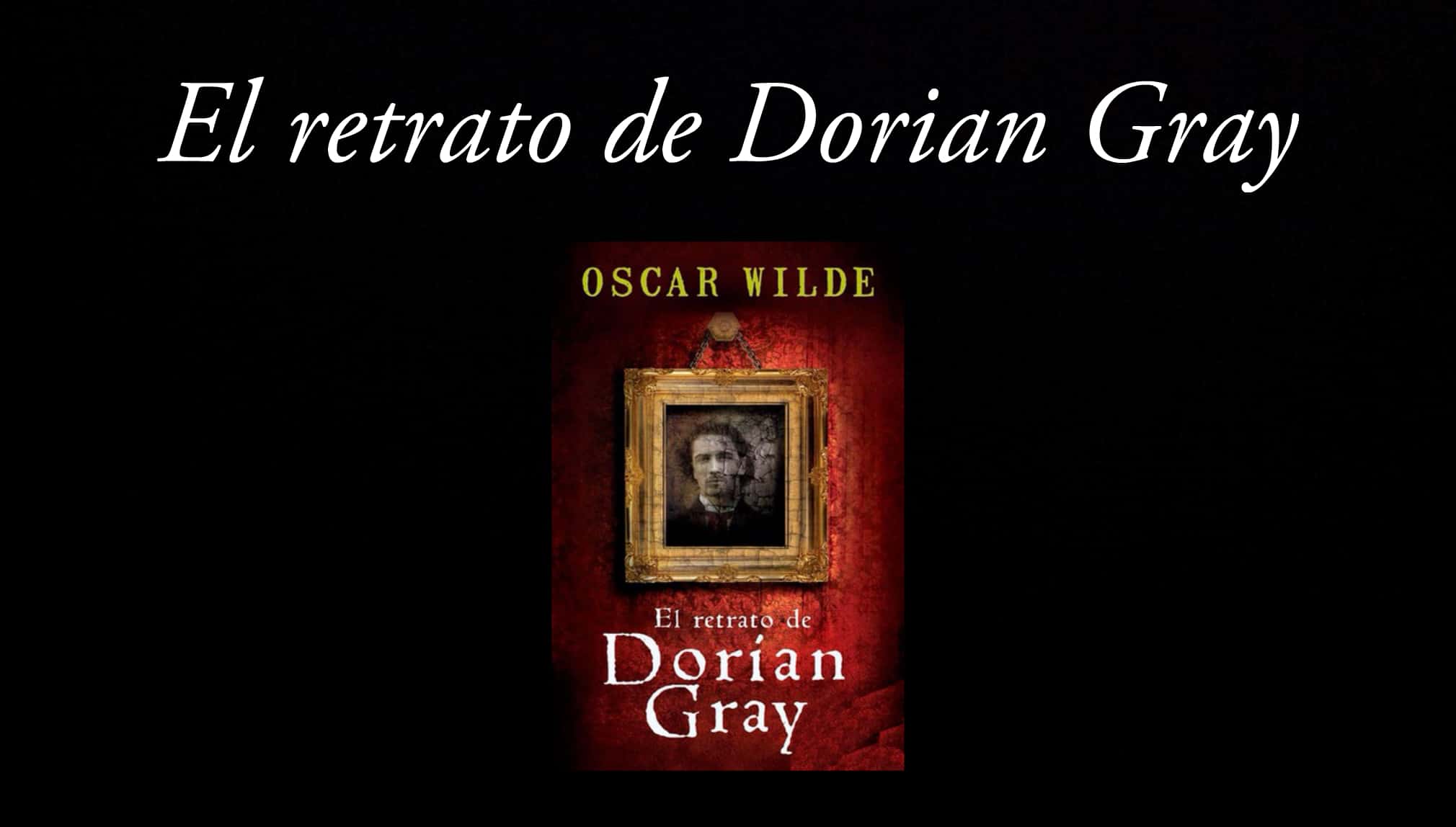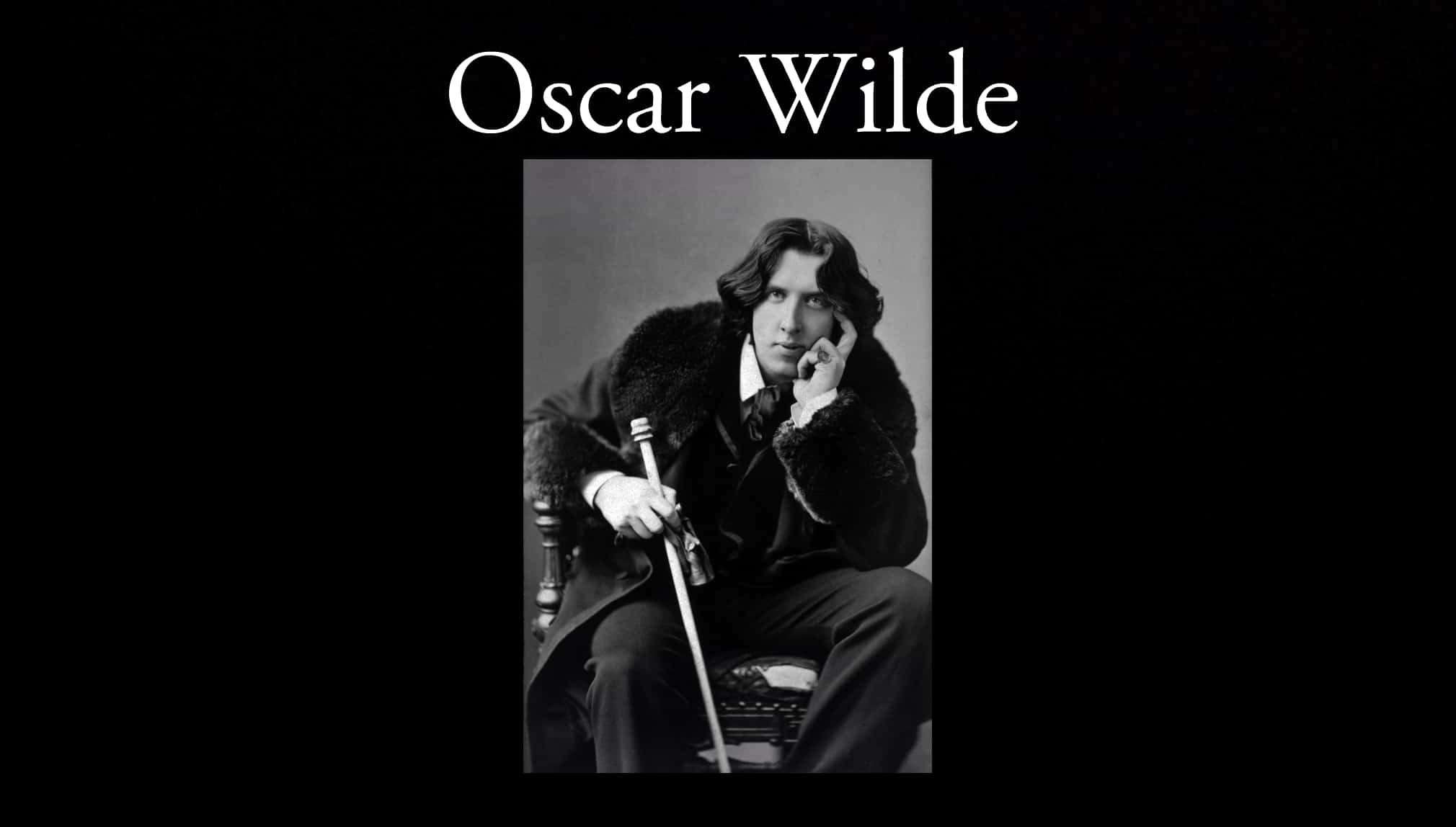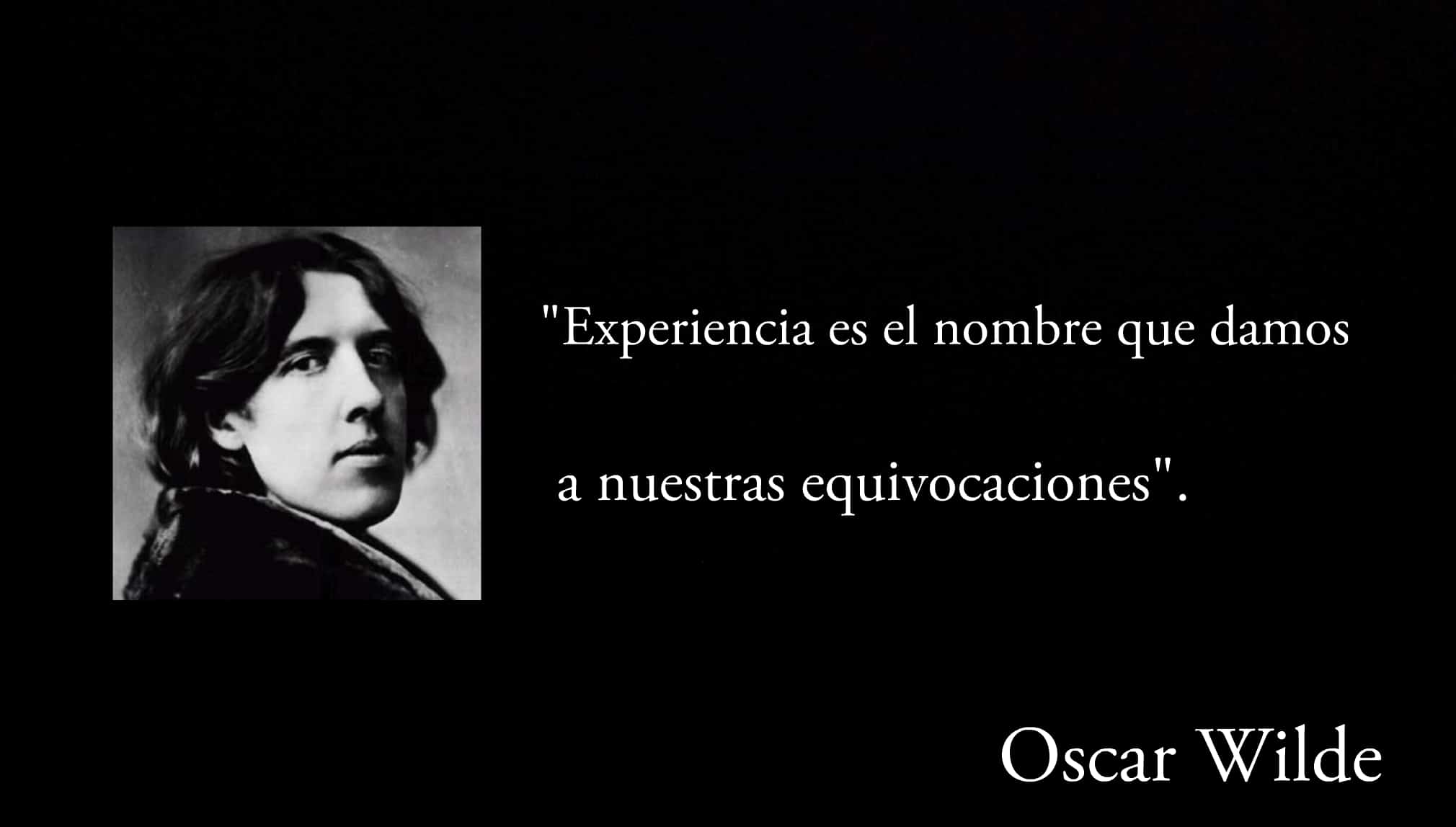
Book of The Picture of Dorian Gray.
El Dorian Gray portrait it is the only novel published by Oscar Wilde. It is considered one of the most controversial literary works of the XNUMXth century. The development of its story revolves around three characters representative of the battle between good and evil existing in each person, an intrinsic dispute to free will. This book recounts the spiritual journey of Dorian Gray, an attractive young man who is tempted by the concept of eternal youth and beauty.
Oscar Wilde was always a genius, and used his personal experience and integrated different literary styles to create this novel. According to Svanhvít Helga Magnúsdótti from the University of Iceland (2011), in the narration there are resources of Gothic fiction, aestheticism and elements similar to those of auspicious of Goethe. Likewise, references to the Old Testament Book of Genesis appear to add moral emphasis to the confrontation between justice and sin.
¿The Portrait of Dorian Gray o The Portrait of Dorian Grey?
It is very common to see the wrong title «The Portrait of Dorian Grey". This is, of course, because people spell it the way they pronounce it. However, although their hearing does not fail them, that is not the corresponding spelling in the surname, but "Gray."
The life of Oscar Wilde
Birth and family
Oscar Fingal O'Flahertie Wills Wilde was born in Dublin, Ireland, on October 16, 1852. His father was Sir William Wilde, a distinguished surgeon; his mother, the writer and poet Jane Francesca Elgee (who signed under the pseudonym Hope). He studied primary school at Trinity College in his hometown and after turning 20 he entered Magdalen College in Oxford, England, where he stood out for his excellent grades.
Youth
From a very young age, he built an enormous reputation as a dandy and as an excellent witty conversationalist. According to Øyvind Olsholt of the literary portal skoletorget.no (2003), Wilde despised violence and sports. This was a sentiment masterfully expressed in the next sentence of his work An unimportant woman (1893):
"English country gentlemen galloping behind a fox: the unspeakable in pursuit of the inedible."
London residence
He took up residence in London after completing his university training. Influenced by literati such as the great Irish poet, WB Yeats, and the Prince of Wales's mistress, Lillie Langtry, Oscar Wilde began to write short stories, plays, and poems. Similarly, he worked in a newspaper and traveled on a reading circuit to America (Douthat and Hopson in The picture of Dorian Gray.
First works
His first publications were rather mediocre poetry. However, he soon gained recognition for his comic plays. The first, Vera; or, the nihilists, premiered in 1880. It was followed by presentations of The fan of Lady Windermere (1892) An unimportant woman (1893) An ideal husband (1895) and The importance of being formal (1895), his most famous theatrical creation. In 1884, Oscar Wilde married Constance Lloyd, with whom he had two children.
Scandal surrounding The Picture of Dorian Gray
During the summer of 1890, the first edition of the only novel written by Oscar Wilde appeared in Lippincott's Monthly Magazine, The Portrait of Dorian Gray. The book received strong criticism for being scandalous and immoral, which motivated its revision along with the addition of a preface and six new chapters. With this prelude, Wilde tried to anticipate and respond to the critics who labeled his work as "an immoral tale."
Likewise, the preface briefly introduces the precepts of a type of artistic philosophy: aestheticism, a manifestation - affirmed by Wilde - with intrinsic value. It is a revolutionary position within Victorian England, based on the beauty of art without any other moral or political purpose. In the preface, Wilde also advises readers not to look for meanings "under the surface" of art.

Oscar Wilde.
A very rich novel is literary forms
The Portrait of Dorian Gray is a mix of Gothic novel parts, manners comedy segments, and theatrical exhibition pieces concerning the relationship between art and integrity. Consequently, it was inevitable to arouse - at least - discomfort among the rigid Victorian audience, for this reason, Wilde's preface warns that "the diversity of opinions regarding a work shows that this work is new, complex and vital."
Second edition and the scandal it sparked
The launch of the second edition (1891) of The tale of Dorian Gray it coincided with the first meeting between Oscar Wilde and Lord Alfred Douglas (whom he affectionately called "Bosie"). When the Marquis of Queensberry - the lord's father - publicly criticized the affair, A scandal broke out that ended with a trial in 1895 for "gross indecency."
The court used The Portrait of Dorian Gray as evidence due to its numerous passages with homosexual overtones. Wilde was publicly humiliated and sentenced to two years of forced labor. During that time, he wrote Lord Alfred a long disheartened letter entitled De Profundis (The depths, In latin). Upon serving his sentence, he left England.
Wilde's last years
Phe spent his last years living in poverty between Italy and France. In 1898 he made his last literary publication (under a pseudonym), The Ballad of Reading Jail, a poem about the feelings of a prisoner towards another who is going to be executed.
Finally, Oscar Wilde died of meningitis on November 30, 1900., in Paris. He was converted to Roman Catholicism on his deathbed.
Summary of The Picture of Dorian Gray
Basil and the impossible beauty of Dorian
While at the home of his aunt - Lady Brandon - the renowned artist Basil Hallward meets Dorian Gray. This is a cultured and wealthy young man endowed with an "impossible beauty" that immediately captivates the artistic imagination of the painter. For this reason, Dorian poses seated to be portrayed several times. Basil admires him as if he were some Greek mythological hero or figure.
At the beginning of the novel, the artist is completing the first portrait of Dorian as he is. But (he admits to his friend Lord Henry Wotton) the painting does not quite satisfy the artist because it reveals so much of Basil's feelings for Dorian. Lord Henry — famous for shocking his friends by his rampant celebrations of youth, beauty, and selfish pursuit of pleasure — disagrees, believing the portrait to be a masterpiece.
Lord henry
When Dorian appears in the study, Basil presents him with a gesture of resignation to Lord Henry. Basil believes that Lord Henry could be a bad influence on the young man Dorian. A suspicion confirmed only in the first conversation, in which Lord Henry upsets Dorian with his smug ideas about the fleeting quality of beauty and youth.
The beginning of the curse
Then, Dorian curses his portrait out of concern for an appearance that fades with the passage of time. In a fit of anguish, he pledges his soul to the only portrait that can circumvent the infamous effect of age. and that allows you to stay young forever. Basil, in an attempt to appease him, hands him that portrait.
The appearance of debauchery for the carnal and the appearance of Sibyl
Over the next two weeks, Lord Henry's influence grows stronger. The young man surrenders to the “new hedonism” and sets out to lead a life dedicated to the search for carnal satisfaction. In those moments, Dorian falls in love with Sibyl Vane, a young actress who performs in the theaters of the poor neighborhoods of London. Dorian loves his performances, she, in return, calls him "prince charming."
At that point, James Vane - Sibyl's brother - disapproves of the burgeoning relationship and insists that Dorian is not suitable for her. Nevertheless, Sibyl is carried away by emotions. She ignores negative comments about Dorian and decides to stop acting because he no longer wants to pretend on stage, because "now he feels something real."
A break and an impossible reconciliation
Unfortunately, acting is the quality that Dorian loves about her, therefore, ends the engagement in the cruelest way. After the breakup, Dorian returns home and notices a change in the portrait painted by Basil: now he smiles with contempt.
Afraid of the unpleasant aftermath of his sick and sinful behavior reflected by the canvas, he decides to reconcile with Sibyl the next day.
But the damage is irreparable, in the following afternoon Lord Henry informs Dorian that Sibyl has committed suicide. At the prompting of Lord Henry, Dorian resolves to regard death as a kind of artistic triumph, where she personifies tragedy and he leaves behind any feeling of grief. Of course, Dorian decides to hide his portrait in a room at the top of his house in order to hide the changes from others.
Dorian's "new bible"
Later, Lord Henry hands Dorian over to him a book with twisted descriptions of the farms of a XNUMXth century French citizen. This text becomes Dorian's "new bible". Consequently, he decides to plunge into a life brimming with sin and corruption, with no regrets caused by moral standards or the consequences of his actions. The only commandment is to insatiably accumulate exciting experiences.

Oscar Wilde quote.
The hopeless passage of time and Dorian's decaying reputation
Eighteen years pass. Dorian's reputation is deteriorating in London social circles due to the incessant rumors regarding his depraved and dishonest behavior. Despite everything, the nobles continue to accept him because he remains young and beautiful. Although the face in the painting in the portrait looks withered and hideous.
Basil, the new features of the Dorian portrait and death
On a dark and foggy night, Basil Hallward comes to Dorian's house to confront him about rumors about his reputation. They begin to argue. In that instant, Basil notices the rotting of Dorian's soul, who shows him the gruesome portrait.
The painter begs him to reconsider. But Dorian cries out "it is too late for penances" and, in a fit of anger, kills Basil. To get rid of the corpse, Dorian bribes and asks for help from a mysterious doctor. The next night, Dorian heads to an opium cache, where he meets James Vane, who tries to get revenge for the death of his sister Sibyl. Dorian manages to escape to his country house. There, he again sees James looking through a window while serving some guests.
Dorian's remorse and "change"
Dorian is once again overwhelmed by fear and guilt. Although this feeling disappears when Vane falls dead due to the accidental shot of a hunter. Recent events drive Dorian to seek a change in his lifestyle, he can no longer continue down the path of obscenity. Although he is unable to confess his crimes ... now the painting reveals a different expression: hypocrisy.
Death
Finally, Dorian cannot bear the countenance of his own drawing; enraged, he uses the same knife with which he killed Hallward to destroy the painting. His servants hear a crash. Going to check, they get intact the portrait of the young and beautiful Dorian Gray. Next to the painting, the body of an old man horribly disfigured with a knife stuck in his chest.